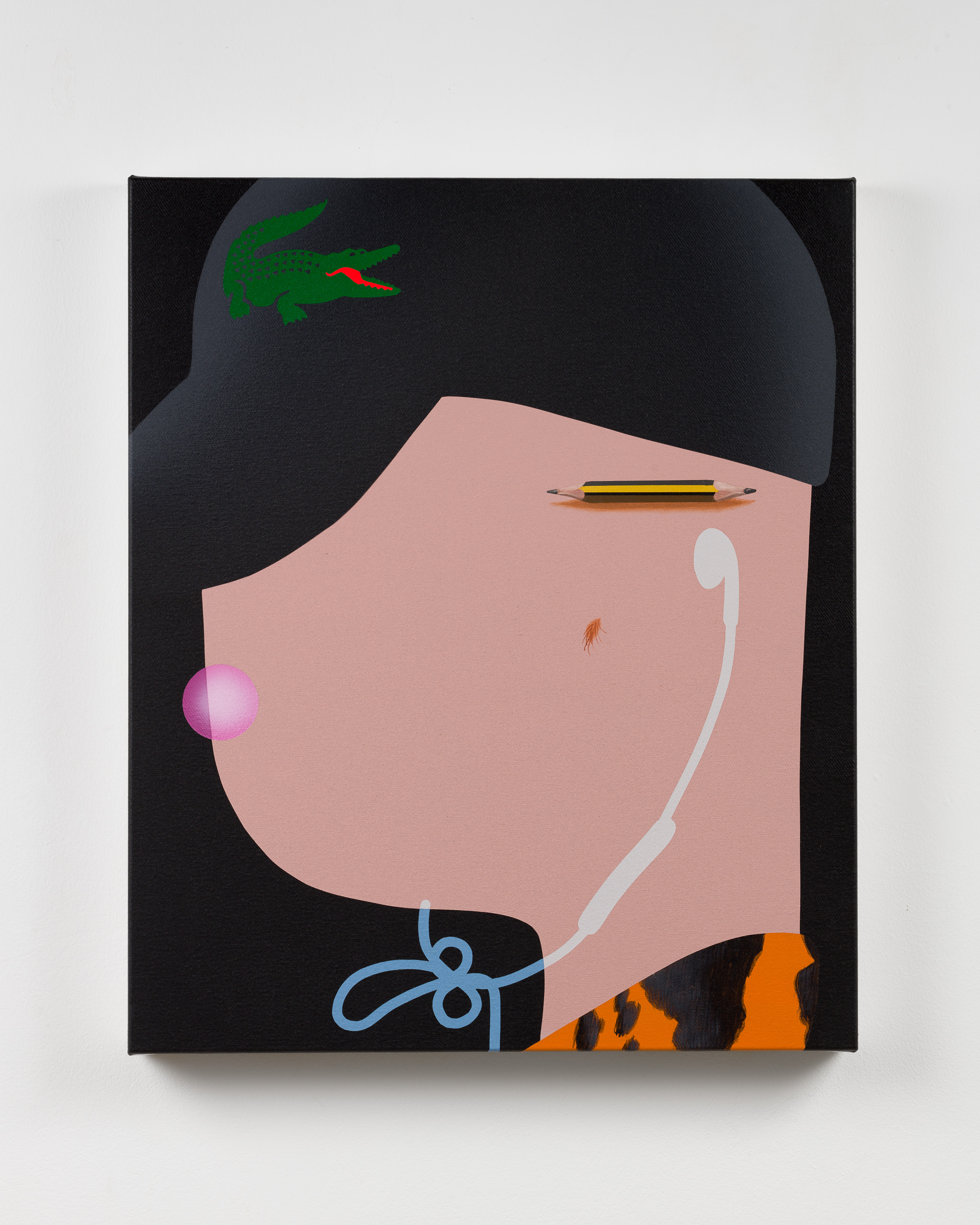Interview with Alex Branczik, Head of Contemporary Art, Europe, Sotheby’s
For an industry that has taken pride in its traditional, personal and social qualities, the pandemic has been a truly existential crisis, forcing overnight innovation in business models and practices. Sotheby’s has risen to the challenge with notable speed and success. Alex Branczik, Head of Contemporary Art, Europe talks with Nick Hackworth how the auction house has adapted and what the broader impact of the pandemic on the art market might be.
NH I know you and your colleagues have been working pretty intensely over recent months. How is the pandemic effecting Sotheby’s business?
AB It’s interesting you ask this to me now actually, because we just had the global, senior management team meeting, on Zoom of course. When you look back at what’s happened since the beginning of the year, pre-pandemic, it’s pretty incredible how much has changed. The pandemic has accelerated a lot of changes that were probably overdue for the art market. I’m talking more about the auction business when I say this. In spring, when we would normally be gathering material for sales, people couldn’t travel. Normally we go and see people, value their paintings, bring them to an auction where we have hundreds of people in the room. There’s not a single part of that process you could actually achieve in Covid. We had to pivot very quickly from our normal way of doing business to something that could work. I’m proud of what we’ve done at Sotheby’s. We’ve led the market and the results have been phenomenal. To date, we have achieved $3.2 billion of consolidated sales this year, across the entire business. We’ll be more profitable this year than last year, even though we’re selling less in terms of value.
NH What was the key element of this successful pivot?
AB The key change is digitisation, the move to online sales. I think by the end of 2020 we will have done 500 online auctions, about six times the number we did in 2019. To date, we’ve made over $502 million in online sales. We’ve had online sales in all 44 of our business categories. In Contemporary Art we’ve done 25 online sales this year. I moved both of our Contemporary Art day sales, which is the volume part of what we do, fully online, and it’s been a real success. With all our online sales, there is no auctioneer and no catalogue, you go online, you see the work, you bid and that’s it. And critically, across every category over 40% of those bidders and buyers have been new to Sotheby’s, and that is huge. A third of these bidders have also been aged 40 or under.
NH Really? This 40% are entirely new customers to Sotheby’s?
AB Yes. Newly registered people. In the old model, you’d be on a subscription list for a catalogue, you’d receive your catalogue and you’d discuss the works with one with my colleagues at Sotheby’s. Now there’s a whole bunch of people who are not even talking to us, they’re quite happy self-serving through the internet. We’ve really put a lot of effort into the content we’ve put online and it’s quite addictive, you can even bid from the app on your phone. Up to a certain price-point, I think people are fine not viewing the artworks. That, I think is the change from where we were before. I think a typical position of some of the key stakeholders in the business and the market is ‘this is fine art we’re talking about, right, you have to see it’, but in actual fact I think everybody has a threshold up to which they’re prepared to spend and take the risk without seeing it. Although this doesn’t necessarily carry for things in the multi-million-dollar bracket.
NH Do you think digitization will grow the art market, in absolute terms?
AB Yes, I do, but I think it will happen at the lower price range. In 2020, the average lot value sold in a purely online sale—not online in a live auction—is $22,000, which is more than double what it was last year. There’s a lot of art out there. This year, we’ve seen major collectors have clear outs, filtering out what’s not core to their collection, and there are buyers out there for these things.
NH What you’ve described is, of course, a more typical, online retail model. How is this change effecting what kind of art is getting bought and sold?
AB There has been a lot of experimentation this year and as a global team, we’ve been innovative and open to new ideas that will likely change our business forever. We’re seeing that there are some things that sell better online than others and are better represented through digital images. It’s not rocket science; flat art, rather than sculpture, first and foremost. Things which are colourful and commercial work where the interest is in the process or the surface, or something which really requires you to see it in person. The obvious thing is a Banksy, you don’t have to stand in front of it to understand it or feel its impact. Works by Banksy are making huge prices at the moment, come what may. To an extent, I do think that, the move online has the potential to skew the market towards certain things.
NH And how are things changing for your business at the top end of the market? Sotheby’s extraordinary, multi-city, live-streamed sale, in June was the big moment for the art market this year, the first clear indicator of the market’s resilience despite the crisis.
AB Well, when it gets to the high-profile, what we used to call ‘evening’ sales, even the terminology we’re using is having to change. Now they are live-streamed events where the auctioneer is in London fielding bids from specialists on phone banks around the globe – in New York, Hong Kong, London and sometimes Paris – via zero-latency video streams broadcast to giant screens in an impressive ‘control centre’ setup. You can’t really call them ‘evening sales’ anymore, because they’re happening at a different time of day wherever you are in the world.
Developing this new livestream auction format was one of the biggest challenges for us to overcome. In the auction calendar, May and November are the big selling seasons in New York, although in May this year, the city was completely shut down, so we had to move our sale to June. We’d already gathered the property for this season before the pandemic hit, so the real challenge was, how do you present it? How do you have an auction under the conditions imposed by Covid? The live-stream format we came up with was amazingly successful.
In October, we held live-stream sales in New York, Paris, London and Hong Kong, which brought the total for consolidated sales in that month alone to over $1 billion. They also received 4 million views combined. In just under six months, the format for us has become commonplace, and extended our reach entirely.
Sotheby's new live-stream format

NH Did you expect it to work? What did it feel like beforehand? You must have been pretty nervous…
AB Well, we were obviously nervous because there hadn’t been a true test [post-pandemic] of the market at that level but we felt confident in the great material we had. In terms of the actual event, a lot of preparation went into the live-streaming. We had rehearsals, tested everything and had emergency plans for if something went wrong. It was an incredible moment when we sold the Francis Bacon triptych, from the Astrup Fearnley Museum in Oslo, for $84.6 million. The under bidder was someone in China, bidding online through the app, who put in a final historic $73.1 million online bid before the painting was finally ceded to my colleague in New York after 10 minutes.
NH Presumably to someone you knew!
AB [Laughs] Actually It was their first bid at Sotheby’s! But we had vetted them in advance, of course. In that same sale a Basquiat work on paper sold for $15.2m and again that went to an online bidder – it still stands as the highest price realised online at Sotheby’s. The other major shift this year I should mention is private sales, where we’ve had, by far, the biggest year in the company’s history. That’s indicative of a shift away from the regularity of auction seasons and also of the fact that some people were more comfortable taking a firm private sale price, rather than risking auctions until we could really prove that they could work during Covid.
NH Clearly things are, relatively speaking at least, fairly healthy at the top of the art market. Sadly, that isn’t the case for most of the art market and the art world, much of which has been devasted by this crisis.
Even before the pandemic there was a growing sense that art ecosystem is becoming ever more unbalanced, in favour of the big players in the market. Do you think this is true? If so, do you think those at the top of the market bare any kind of responsibility to look out for those in emerging sectors? Or should we follow Arne Glimcher’s (The founder of Pace Gallery) classic neo-liberal position, who was recently quoted as saying “I think the galleries that should survive will survive. They’ll make themselves survive”?
AB Well, and this is a personal response, one positive that might come out of this crisis is that the local might benefit again. People are having to think more locally than before. Prior to the pandemic there was an increasing homogenisation of the art world. Art-fairs, in whichever corner of the world, were often showing the same things. It was the same galleries, taking the same artists, to find new buyers in new places. If you think back to the early days of Art Hong Kong, you went there to see local, Asian galleries and that was a platform for them to show off home-grown talent. Then it increasingly became a place to go and buy an Anish Kapoor disc, which you could just buy in London anyway. That said, it is of course a very difficult time for young galleries. There’s some truth in the Glimcher’s quote but it’s not easy to be a young gallerist at the moment. It’s hard to get the actual collectors into galleries. Do those of us at the top end of the art market have some responsibility to support the emerging sector say? Yes, I think so. On a personal level, I work in the arts, I collect in a modest way, and I’m buying younger artists from the younger galleries and that’s what needs to be encouraged.
NH What was the last artwork you bought?
AB The last work I bought was a painting by Oli Epp. I know Oli a bit, and I think he’s great, and I really like his work. And then I’m bidding as we speak in an online sale, and I’ll know tomorrow whether I’m the owner of another painting. I don’t know yet. At the moment I’m the highest bidder!
Oli Epp, Two Tip, 2020, Oil and acrylic on canvas, 60h x 50w cm


